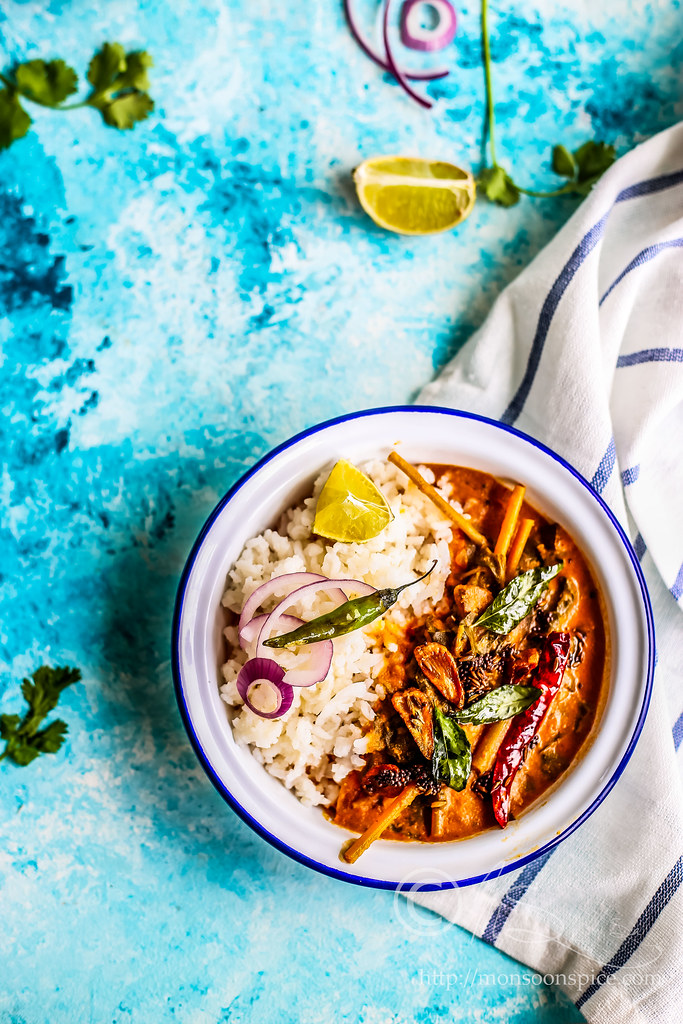
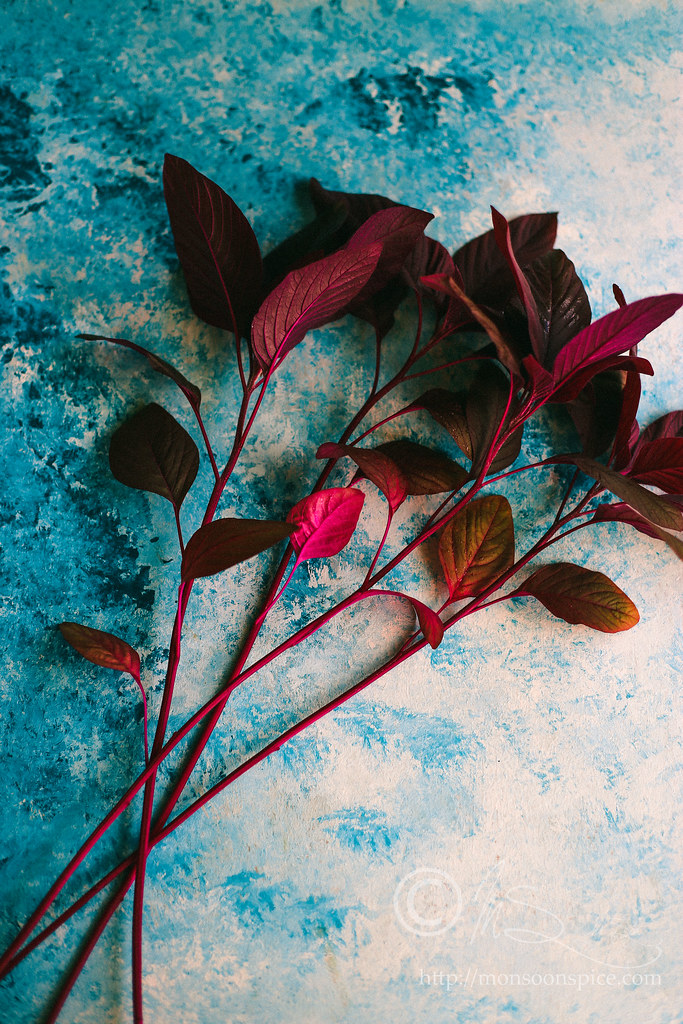
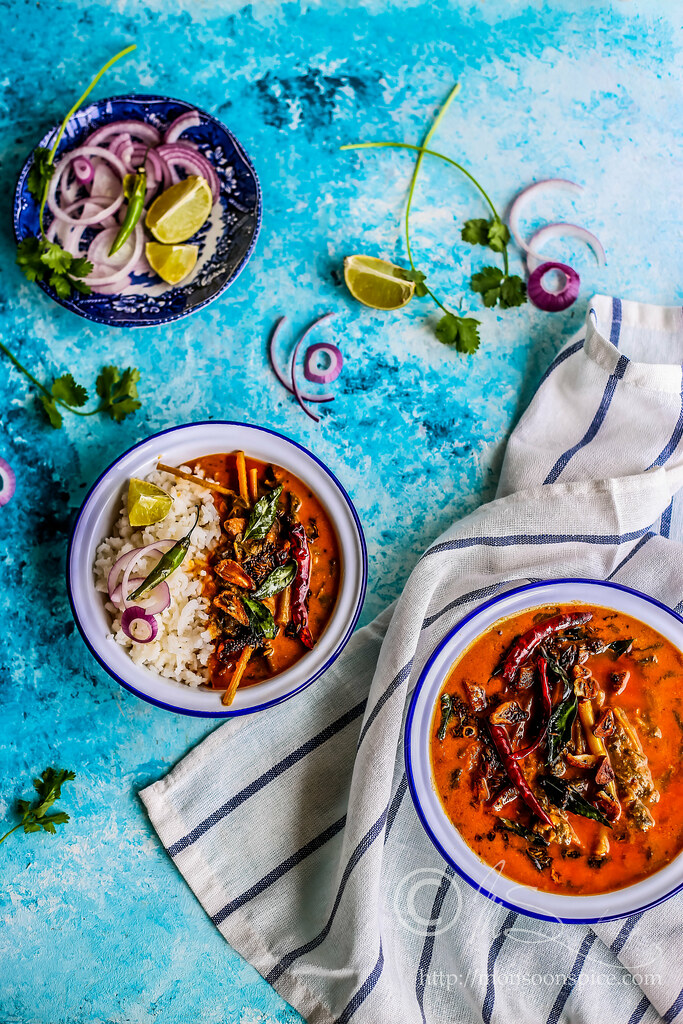
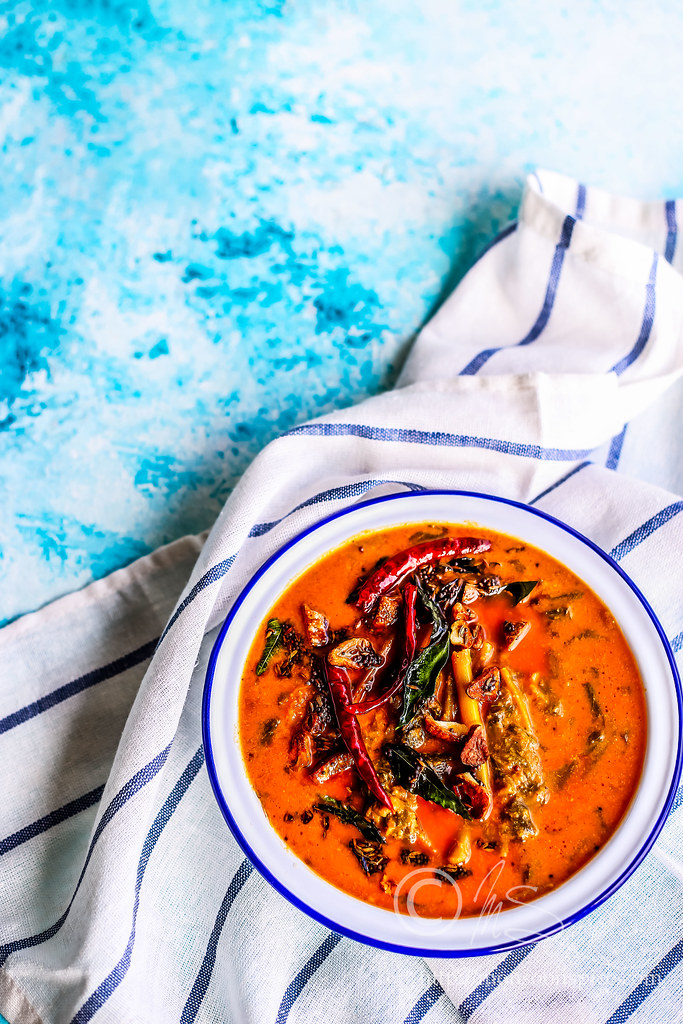
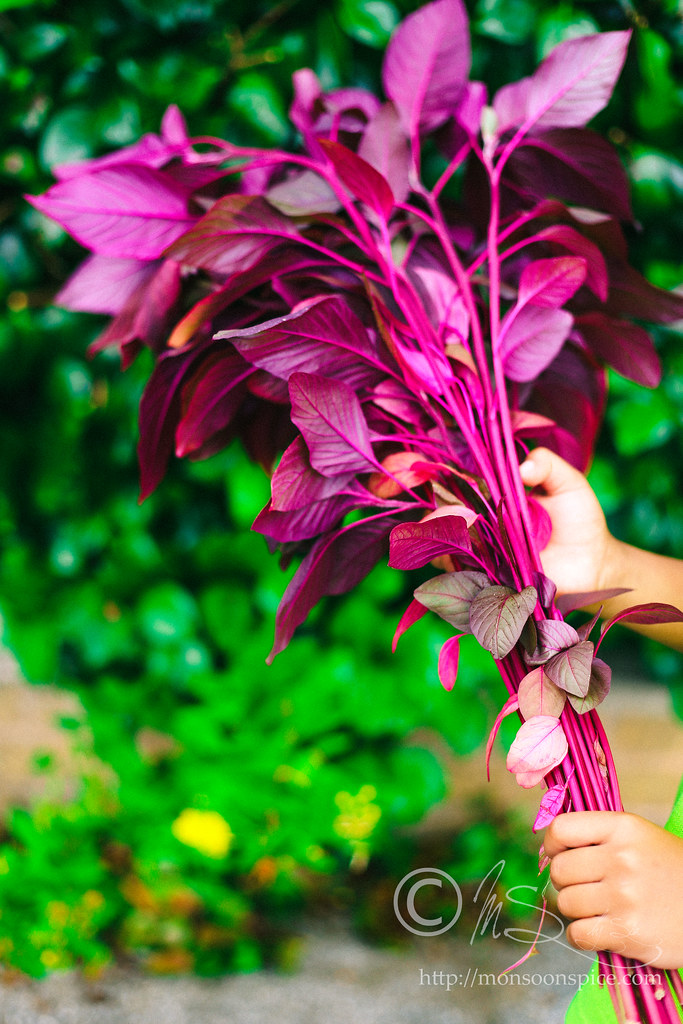
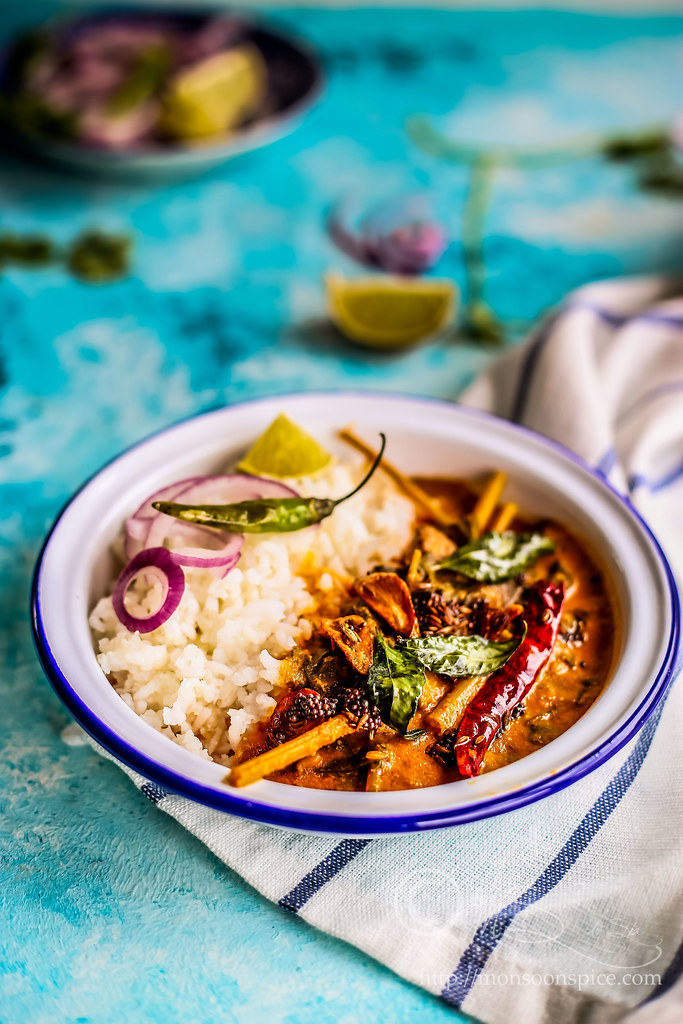
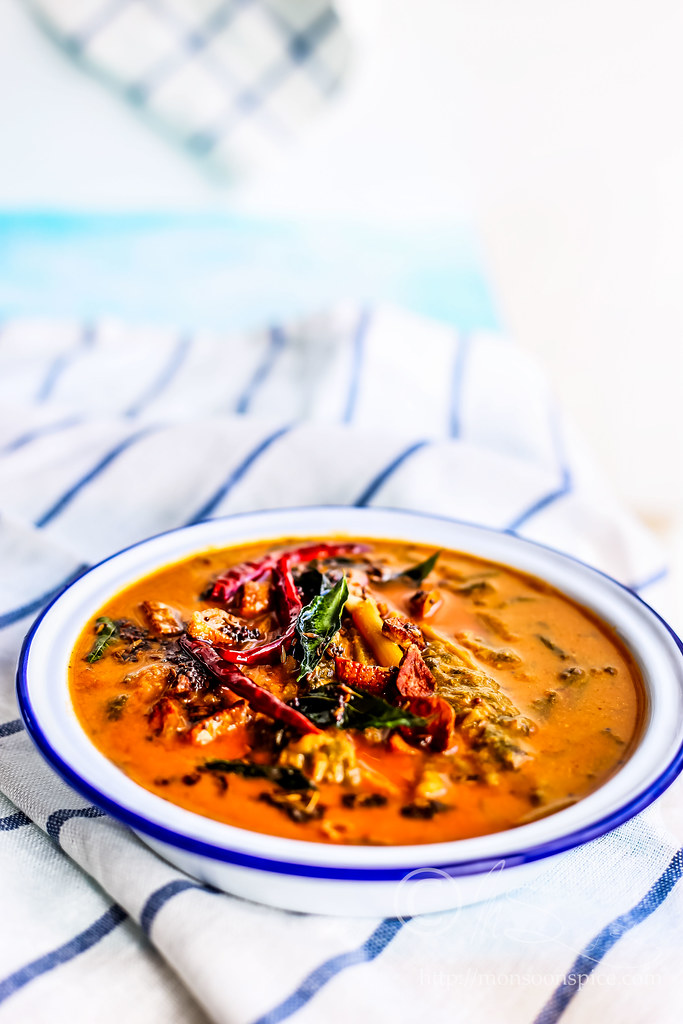
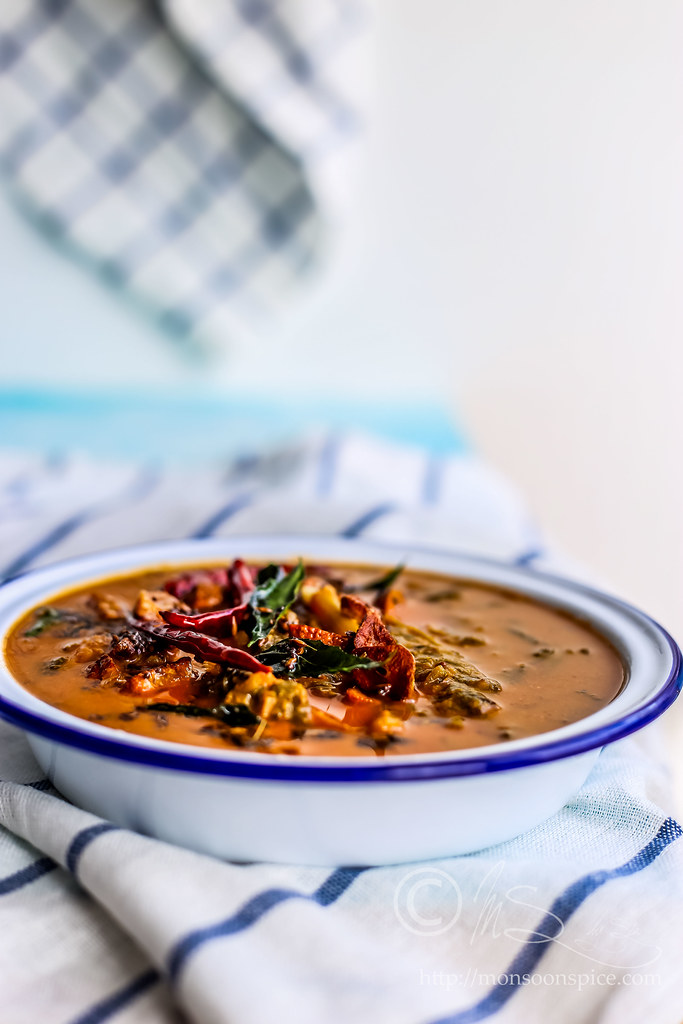

Cooking Time: 25-30 mins
Recipe Level: Easy/Beginner
Spice Level: Low to Medium
Serves: 5-6 People
Shelf Life: Best served fresh but can be refrigerated for up to 3 days and frozen for up to a month
Serving Suggestion: With rice, papad and a dollop of Ghee or with chapatti/dosa/Ragi mudde/Ragi Rotti or Akki Rotti
Ingredients:
1 large bunch of Red or Green Amaranth/Harive Soppu
1 cup Toor Dal/Split Pigeon Peas
3 medium Tomatoes
4-5 large cloves of Garlic, peeled
¼ - ½ tbsp. Jaggary (Adjust as per taste)
1 tsp Haldi/Turmeric Powder
¼ tsp Hing/Asafoetida (Optional)
Salt to taste
For Coconut Paste:
¾ cup grated Coconut, fresh or frozen
1 large marble sized Tamarind Pulp (about 1 tsp) or ¾ tsp Tamarind Paste
1 tsp Jeera/Cumin Seeds
1 tbsp Dhania/Coriander Seeds
3-5 Dry Red Chillies (Preferably Kashmiri or Byadagi or any medium spiced dry red chillies. Adjust as per taste)
½ - 1 tsp Black Peppercorns (Optional. Adjust as per taste)
1½ tsp Urad Dal/Split Blackgram
1½ tsp Chana Dal/Split Chickpeas
1 inch Cinnamon Stick (Optional, but recommended)
3-4 Cloves (Optional, but recommended)
½ tbsp. Oil (Preferably coconut oil)
For Tadka/Tempering:
1 medium Onion, thinly sliced
4-6 large cloves of Garlic, peeled and sliced
1 tsp Mustard Seeds
1 tsp Jeera/Cumin Seeds
1-2 Dry Red Chilli, halved
2 sprigs Curry Leaves
¼ - ½ tsp Hing/Asafoetida
1 tbsp. Oil (Preferably Coconut Oil)
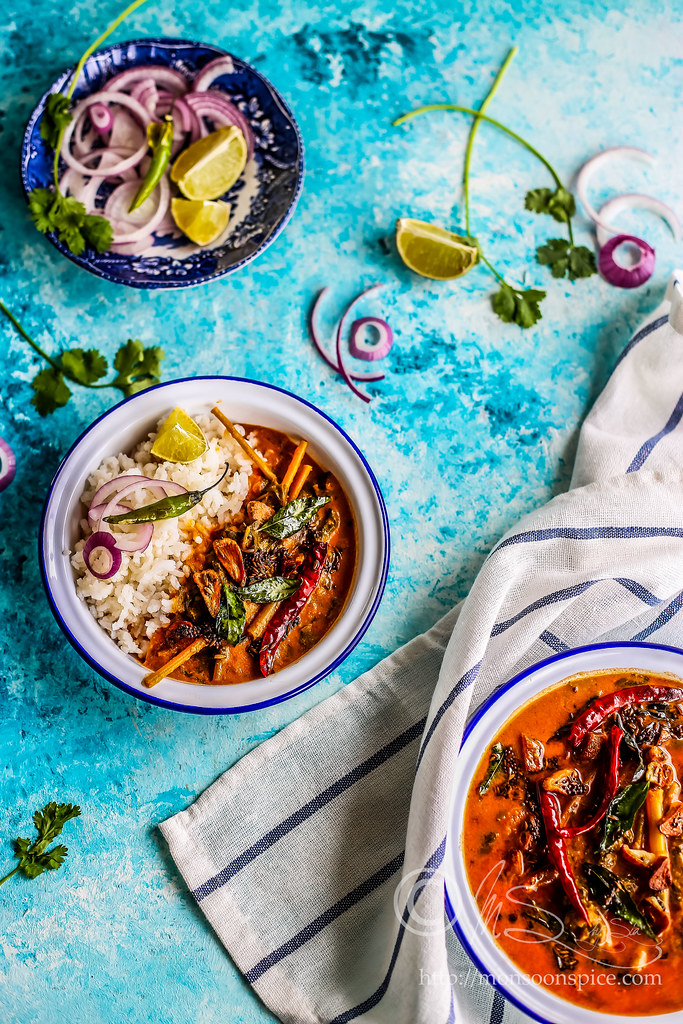

Method:
Preparation:
- Wash the amaranth bunch thoroughly and separate the leaves from stems. Stack about one dozen leaves and roll them into thick cigars and chop the cigars into ½ inch long pieces. Cut the stems into 2 inch long pieces. Place the chopped leaves and stems in a pressure cooker pan along with washed tomatoes, turmeric, jaggary, peeled garlic cloves and salt to taste.
- Wash the toor dal 4-5 times until the water turns clear. Add the toor dal to pressure cooker pan along with amaranth leaves. Add about 5-6 cups of water, close the lid and pressure cook on medium flame for 3-4 whistles.
- Peel and slice the onion and garlic cloves for tadka and keep them aside until needed.
Proceed to cook:
- As the dal and amaranth leaves cook, prepare the coconut paste. Heat ½ tbsp. of coconut oil in a pan and add cinnamon stick, cloves, cumin seeds, coriander seeds, urad dal, chana dal, black pepper and dry red chillies. Roast them on medium flame for about a minute or two until the spices are nicely roasted and change colour.
- Transfer the roasted spices to mixer or food processor jar and add freshly grated or frozen coconut and tamarind pulp. Add about ¼ - ½ cup of water and grind them to smooth thick paste. Keep it aside until needed.
- Once the dal is cooked, gently open the lid once the pressure is released completely. Mash the dal and tomatoes with a help of a masher or with the back of ladle. Place the pan on the hob and bring the dal to gentle boil on medium heat.
- Add the coconut paste and about 2-3 cups of water depending on how thick you prefer the gravy to be. Adjust the seasonings and reduce the heat to low to let the gravy simmer for 8-10 mins.
- As the gravy is simmering, prepare the tadka by heating oil in a pan. Once hot, add the sliced garlic and fry them until they turn golden brown. Add mustard seeds, cumin seeds, dry red chilli. As the mustard seeds pop and splutter, add hing and curry leaves and fry them for 15-20 seconds. Next add the thinly sliced onion and sauté until they turn golden brown, about 2-3 minutes, on medium flame.
- Turn off the flame and transfer the tadka to the simmering gravy. Mix well and turn off the flame. Cover and let the gravy rest for 10-15 minutes for the flavours to blend well.
- Serve this delicious and nutritious Harive Soppina Huli or Amaranth and Coconut Sambar with rice, papad and a dollop of ghee. It goes well as a side dish with chapatti, akki rotti, dosa or ragi rotti. Enjoy!
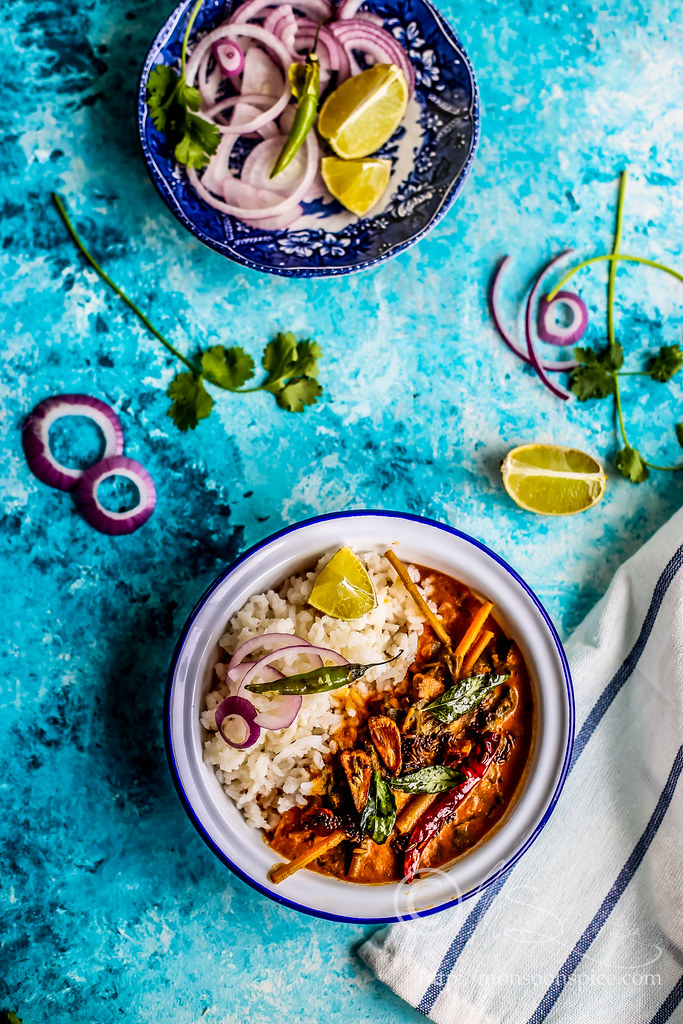
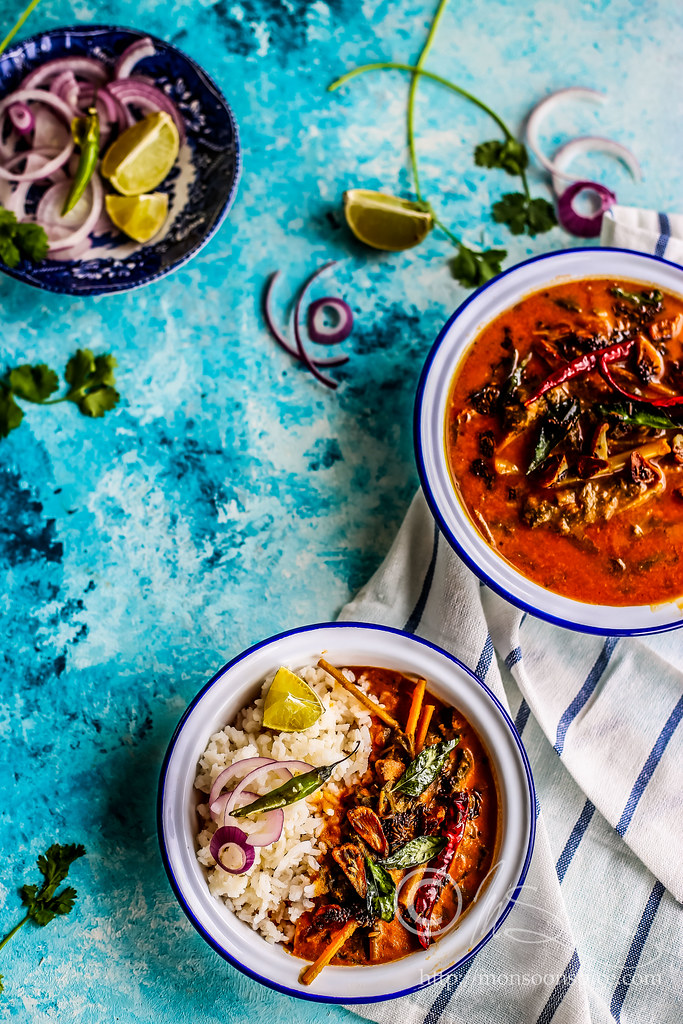
Sia’s Notes:
- You can use any other green leafy veggies like spinach, fenugreek leaves, Malabar spinach etc in place of amaranth leaves. You can also use gourds/squash like bottle gourd, pumpkin, ash gourd, ridge gourd etc and follow the recipe. Make sure to add gourds to the cooked lentils instead of cooking them along as they will turn mushy.
- If you are short on time, use ready to use Sambar Powder (about 1-1 ½ tbsp. or as per taste) and grind it along with tamarind pulp and coconut to smooth paste.

I hate when I have writer's block! It's annoying, more than anything else! luckily, we don't have to speak about this recipe because just looking at it is making me hungry! What a gorgeous and delicious looking dish!
ReplyDeleteAhh, thanks so much Sarah! Thankfully the writer's block can't stop me talking/writing about my love for food and cooking :)
DeleteThis is such a beautiful recipe and the spices sound sensational. I hope you get over your writers block soon.
ReplyDeleteThanks, Kate! :)
DeleteYour photos are stunning -- and I just want to dive into that bowl! I can only imagine the amazing flavors!
ReplyDeleteThanks Lisa for such generous compliments. :)
DeleteOh wow! I haven't worked with Red Amaranth before. This Harive Soppina Huli looks incredible. Love the colors and your photos.
ReplyDeleteThank you. Red amaranth is staple in South Indian kitchens and every time I visit India, I make sure to have my fill of all local greens and vegetables :)
DeleteI'm not very familiar with Indian cuisine. Your beautiful pictures,clear instructions and tips takes the "fear" out of trying this! The colors in the photos are so vibrant!
ReplyDeleteThanks a lot, Amanda! I try my best to make the Indian cuisine less intimidating and simple. Indian cuisine is all about adjusting the spices as per one's taste and once you crack this, it becomes all the more exciting and easy :)
DeleteThe huli looks healthy and scrumptious Sia. Thank you for sharing.
ReplyDeleteYou are most welcome, Shilpa :)
DeleteSia, made it over the weekend and came out fantastic. Thx for the share.
ReplyDeleteI made with spinach and in IP cooker :) - (pinch of swad)
That's wonderful,Vandana. So glad to hear you enjoyed the dish.
Delete